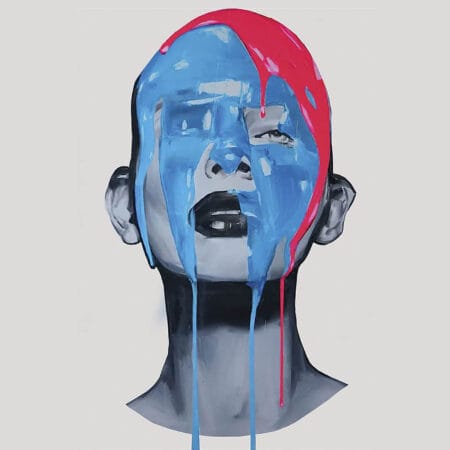The decision to study art shaped by passion and dedication. In addition to the idea of a varied and exciting studies, many prospective students ask themselves the question of financing. In Germany there are a number of scholarships and other funding opportunities to support future artists.
In this article we examine the different types of scholarships and financing options for art students and go through the application process.
Overview of scholarship types

This picture was created with dall-e
Depending on the classification, many types of scholarships can be distinguished. On the whole, however, you can divide them into full and partial grants.
In order to deal optimally with your scholarship question and use your time and energy efficiently with the multiple requirements, professional services are available here where you buy a master's thesis . By using such a service for writing and writing the thesis, strongly demanded art students manage to consciously concentrate on the topic and research of their specialist work and to focus on the decisive question of their work.
With a professionally written scientific text, students have the opportunity to present their research results at the highest level - and thus give the decisive thrust of their study career.
However, the work as it was legally made by the ghostwriter is to present an attempt to deceive. We strongly advise against this. But it is completely legal to use bachelor theses, master's theses and diploma theses, which was created by a ghostwriter, as a basic structure.
Full scholarships
Most students strive for a full scholarship because it is not only very attractive financially, but also offers a great relief in everyday life. As the name suggests, all tuition fees and living costs are covered by a full scholarship, which allows students to concentrate fully on their studies and their artistic development.
Fully scholarships are often awarded by renowned universities or important foundations. However, the competition for a full scholarship is very strong, which is why applicants must be able to not only show outstanding academic achievements, but also a convincing artistic portfolio in order to get a promise.
Sub -scholarships
In the case of a partial scholarship, the scholarship provider assumes between 10% and 90% of the tuition fees and living costs. Even if sub -scholarships are significantly less attractive than full scholarships, they make a significant contribution to the financing of the course.
Art students who receive a partial scholarship must therefore be able to take on part of the costs independently, for example by exercising a part -time job or receiving financial support from relatives. On the other hand, you can receive support in writing your university work from a reputable ghostwriter agency and read about my ghostwriter experiences .
National and international funding programs
Depending on whether the art students choose to study at home or partly or completely abroad, they can apply for a national or international funding program.
A comprehensive database for the quick search for suitable scholarships and funding programs for art students offers e-fellows.net : scholarships for artists . The website of the German Student Center and the online search engine Mystipendium.de with its prominent advocate Dr. Ursula von der Leyen are excellent contact points.
National funding programs
National funding programs play a crucial role in supporting art students in Germany. In most cases, these are state organizations, foundations and art associations that finance these programs and are aimed at students with very different artistic backgrounds and study goals.
In addition to financial support, they also offer access to artist networks, exhibition options and mentoring programs. Before applying for a national funding program, students should inform themselves about the respective requirements and provide the necessary documents and evidence at an early stage.
International funding programs
As the name of these funding programs already says, they offer art students the opportunity to develop at a global level and gain intercultural experiences. International organizations such as UNESCO, the EU, but also private organizations, serve as financial sources of such funding programs.
International funding programs can include scholarships, exchange programs and project financing. So they enable students to study in many different countries and implement artistic projects. For a successful application for an international funding program, additional steps such as language tests and visa application are often necessary.
Application procedures and requirements

This picture was created with Dall-E
You don't just get a scholarship. You not only have to go through an application process successfully, but also meet certain requirements, some of them must also be observed according to a commitment.
Application process for scholarships
The competition for a scholarship is often very strong, which is why you have to prepare thoroughly for the application process in order to successfully go through it. First of all, it is necessary to carry out a research in order to get to know the different scholarship options that meet your own needs and interests.
Then it is necessary to put together the necessary documents in compliance with the given deadlines. Depending on the university and funding program, the necessary documents can differ, but in most cases, however, the following must be submitted:
- The letter of motivation is very important and must be meaningful. Here, art students have the opportunity to summarize in their own words, which is why they should get a scholarship, which distinguishes them from the others, what their goals are, etc.
- When creating the curriculum vitae, you should set an accent on your own artistic career and highlight special events and achievements in this context.
- Artist portfolio. Here, students can indicate which artist exhibitions and projects they took part in what their services in the field of art were etc.
- The better the grade average, the higher the likelihood of approval.
- Although it is not a compulsory document, however, professors and / or lecturers work convincingly to ensure that the student receives a scholarship.
- application questionnaire must also be filled out at many universities .
Requirements for scholarships
Depending on the scholarship provider and the program, the requirements can vary, although there are still some common criteria that are taken into account:
- Very strong academic achievements
- Financial need
- Artistic talent
- Fulfillment of specific study requirements
In addition to these requirements, many scholarship providers also value such personal characteristics of students such as leadership experience and extra -curricular commitment. Before applying for a scholarship, students should find out about the exact prerequisites of the respective scholarship venue to ensure that they meet them.
In addition, students should note that there are scholarships that are also linked to certain requirements after the commitment to certain requirements, which must also be met in the future. For example, this can be a certain minimum average or participation in specific art projects.
Advice for a successful application for a scholarship
In this chapter we have summarized some advice from scholarship holders that will help you prepare for the application for a scholarship.
- Exact planning. Gather information about which scholarship providers are suitable for you and whether you can meet your requirements.
- Early research. Finish find out about which requirements must be met, which documents are necessary and which deadlines apply.
- Emphasize your own strengths. Underline your own strengths in the field of art wherever possible: in the motivation letter, in the curriculum vitae, when talking, etc.
- Active networking. Make new contacts and friendships with other artists to gain more experiences and benefit their support.
Financing strategies in addition to scholarships
In the event that you don't get a promise for a scholarship or if you need more money despite a scholarship, there are some strategies on how to finance your studies.
- Study loans are an important and sought -after financing option for students with which tuition fees, living costs and many other expenses can be paid.
- Part -time jobs can be exercised in addition to studying to earn a few hundred euros in order to finance your studies yourself or spend money on your hobbies and / or leisure activities.
- Crowdfunding is becoming increasingly popular with prospective artists. On numerous crowdfunding platforms you can present your ideas and projects to a wide audience and thus possibly collect considerable sums.
Conclusion
In Germany there are a variety of scholarship providers and other financing options for art students who partially or completely cover their expenses for studying, the cost of living, participation in art projects, etc. It is important to find out more about the available scholarship providers in order to be aware of which of them.
Through careful preparation for the application process for a scholarship, prospective artists can get the necessary financial support to realize their dreams.

Owner and Managing Director of Kunstplaza. Publicist, editor, and passionate blogger in the field of art, design, and creativity since 2011. Successful completion of a degree in web design as part of a university program (2008). Further development of creativity techniques through courses in free drawing, expressive painting, and theater/acting. Profound knowledge of the art market through many years of journalistic research and numerous collaborations with actors/institutions from art and culture.

















